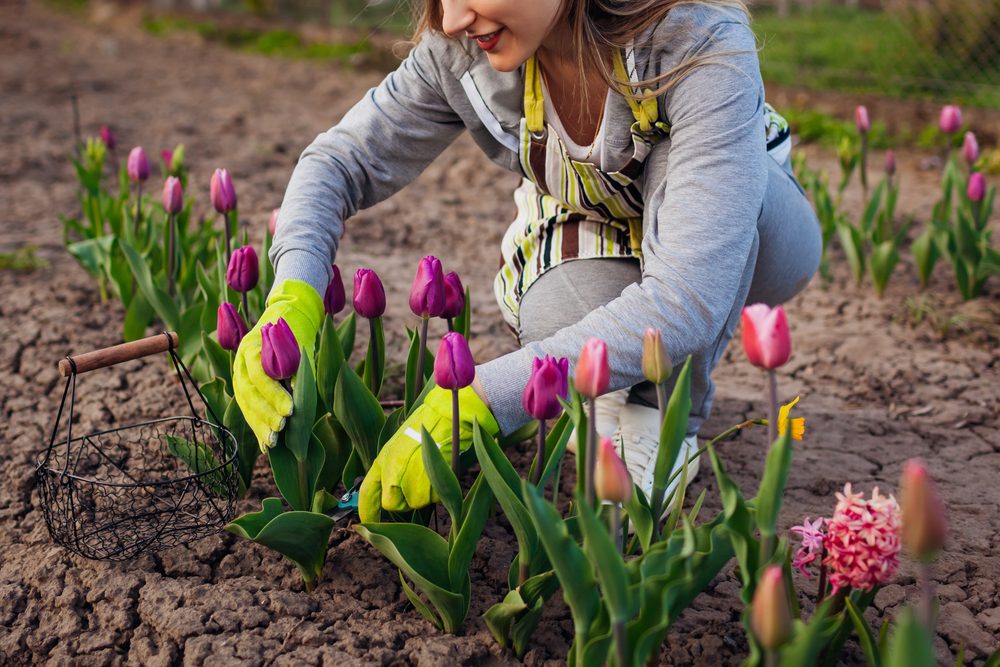While spring could seem like the most logical point on the calendar to start properly planning your garden, if you’re wishing for true green thumbs, gardening must be a year-round passion and pursuit. As you probably know, maintenance is an ongoing process, especially if your garden has been established for many years.
This also applies if you’re wishing for a garden that evolves with the seasons. And I think it’s fair to say that we all do. In most cases, we’d rush into thinking that summer is the busiest season because that’s when we do the most maintenance on a biweekly basis.
Are you interested in a garden that thrives throughout the year? Well, here are the best maintenance tasks and preservation tips you could ask for!

Spring garden maintenance
When it comes to spring, we’ll have to adopt the “start fresh” mentality. First, you will want to give spring flowers a fresh start by properly cleaning your yard. Besides removing any leaves and branches that might have come down throughout the winter, you want to check for plants that might be damaged or even dead. Then, you will have to trim back any perennials that didn’t get cut down during the fall.
Of course, fertilizer and compost will come next. For trees, shrubs, and any other existing plantings, you generally fertilize during the spring. Planters and annuals, on the other hand, need to be fertilized once or twice a month.
Then, you plant the annuals. That needs to happen in the early months of spring—filling in bulbs and flowering the bushes with other cooler-weather annuals, such as pansies and violas. When May comes, it’s time to think about late spring and early summer plantings. This is the time when we like to add annuals like impatiens, begonias, and dahlias because they will set the right pop of color for the entire summer.
Then, you’ll want to water the new plantings. They will need daily watering sessions for the first week and constant watering after that. When you first install a garden, you will need to water it very well for it to thrive.
Then, you turn on the irrigation system. Even if you don’t need to water most of your garden regularly, now is the time to test your irrigation system. It’s a good moment to make sure everything works as it should, so it’s ready to go once the summer heat sets in.
Summer garden maintenance
Prune the flowering bushes. Summer is the right time to prune the spring bushes that have already flowered, such as lilacs and rhododendrons, but also anything that has gone through the springtime growth flush.
Also, make sure you care for the roses. As some might suggest, fertilize the roses through the summer months; they might need regular pruning and deadheading through the season.
Then, water the right way. Now that the heat is here, it’s probably a good time to water your garden on a regular basis. However, there’s more to the process than simply turning the irrigation system on and letting it run.
It’s true that longer and less frequent waterings are more effective. Why? Well, the shorter but more frequent ones will keep the roots shallower. It’s also worth mentioning that the exact amount of water your garden might need solely depends on the types of plantings, the soil, and the weather.
Fall garden maintenance
Cut back the fading plantings. One of the most efficient ways to prepare your fall garden for a beautiful bloom is to clear out anything that isn’t in season anymore. In early fall, we start to cut some things down so annuals and flowers can show through.
Then, make sure you add some seasonal varieties. Late September through early October is the best time for planting fall annuals. In fact, some of the best go-tos for filling out fall planters are asters, grasses, and ornamental kale.
Then, think spring. Fall is the ideal time to start thinking about those first signs of spring. In fact, planting popular spring bulbs such as tulips and daffodils in late October or early November is the right way to go.
Winter garden maintenance
Protect trees and shrubs. Evergreen bushes, pine trees, and holly can easily add life to the landscape even in the dead of winter, so you need to make sure to preserve them. We might often spray the leaves of holly or boxwood with an anti-desiccant in order to keep the leaves from drying out.
It will give them an extra layer of protection to lock in the moisture. It’s also a very good idea to wrap shrubs with twine to prevent any kind of damage from the weight of heavy snow.
You’ll also want to create interest with planters. Seasonal planters with birch logs and winter greens are extremely nice to look at, especially during the holidays, but also after that.
Then, you need to incorporate structure into your plans. Winter is a very good time to evaluate the structure and design of your garden, as most of the flowers and foliage will be out of the picture. A thoughtful garden design will assure it looks good throughout the year.
In the winter, even simple things like a retaining wall or red twig dogwood branches can be more than enough to make it look very good. If you’re finding that maintenance a bit daunting, we get you. Here are a couple of tips on how to make it easier:

Watering
Plants can’t really survive without water. However, too much water can also damage them. If you’re the proud owner of a new garden, daily watering is needed, at least until the seeds have sprouted and the new plants are established.
Once the plants are established, water less frequently but just as deeply. In the summer heat, even well-established plants could require water every couple of days. Then, feel the soil; don’t just assume.
Different beds could require different watering durations and frequencies. This can also be due to foliage covering a wide majority of the soil in the bed, mulch, the organic content of the soil, and so on.
Thinning
Thinning is generally needed only for seeds after they have successfully germinated and are only 2 inches tall. For instance, if two radish seeds sprout right next to each other, you should try to thin one of them so the other can easily thrive.
If you’re not really sure how much spacing you should do, visualize the size of the mature plant and thin it accordingly. If you’re wondering why thinning is important, that’s a great question. Plants need a lot of room to grow, and overcrowding could ultimately reduce the amount of output. Also, airflow and sunlight are improved, which means fungal diseases are reduced.
Mulching
There are three main benefits to mulching:
- It keeps the soil temperature more constant, meaning it stays cool in the summer and warm in the winter.
- It assures weed control.
- It retains water.
It’s also worth mentioning that you shouldn’t add mulch where seeds have been planted until they’ve successfully sprouted and are established. Also, when you add compost and replant, it’s recommended to pull the mulch back first and then reapply it after planting.
If you enjoyed reading this piece, we also recommend reading: 8 Hacks to Upcycle That Boring Garden Furniture















